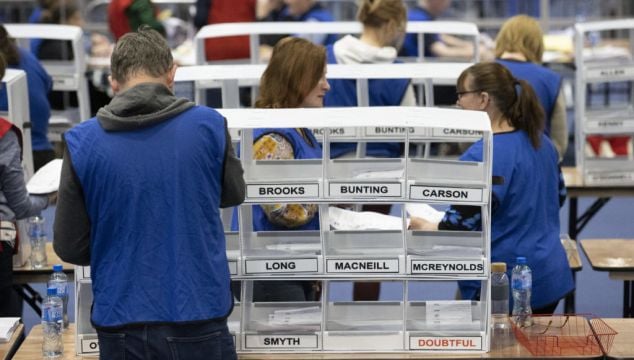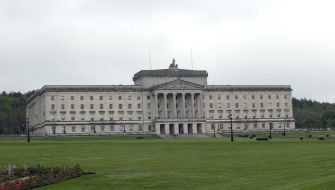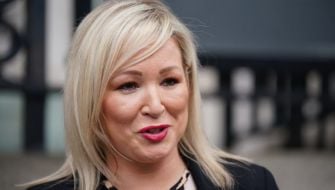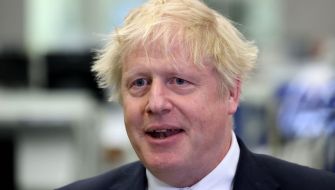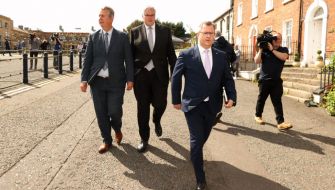A “long and tense” count has been predicted in Northern Ireland’s election amid warnings over the difficulty of forming a powersharing executive.
Counting of the votes got under way this morning, with the first results expected on Friday afternoon.
Irish Minister for Foreign Affairs Simon Coveney warned it could be months before an executive is formed following the election, predicting a “long and tense” count on Friday that could possibly extend into the weekend.
He said he expected it to be “difficult” to form a powersharing executive amid “a lot of polarisation on certain issues within Northern Ireland politics.”
The DUP and Sinn Féin are vying for top spot, which comes with the entitlement to nominate the region's next first minister.
A unionist party has always taken the most seats in the Stormont Assembly, and previously the Parliament, since the formation of the state in 1921. While the office of the first and deputy first minister is an equal one with joint power, the allocation of the titles is regarded as symbolically important.
The DUP has refused to confirm if it will enter into the Assembly if it is headed up by a Sinn Féin first minister, with Sinn Féin on course to become the largest party in the region for the first time according to opinion polls.
We’ve made it very clear the assembly can’t function if the poison of the protocol is still there
DUP MP Sammy Wilson warned on Friday that his party would not re-enter the executive without UK government action over the Northern Ireland protocol.
He told the BBC: “I’ll tell you one thing, if there’s no legislation in the Queen’s speech and no plans to deal with the protocol then we’ve made it very clear the assembly can’t function if the poison of the protocol is still there.”
But Sinn Féin MP John Finucane said people were more concerned about bread and butter issues.
He said: “I believe the DUP during the campaign outlined a five-point plan as to how they were going to grow our economy, fix our health service and help working families.
"I don’t see how that is possible without an executive – in fact, it’s not possible without an executive."
Voter turnout
There are early indications that voter turnout in the Stormont Assembly election may be slightly down on the last polling day in 2017.
Official turnout figures announced on Friday morning as counting started included 61.74 per cent in North Belfast, 58.42 per cent in Strangford, 60.11 per cent in East Antrim, 64.36 per cent in South Belfast, 60.13 per cent in North Down and 64.66 per cent in West Belfast.
The overall average turnout at the last Northern Ireland-wide Assembly election in 2017 was 64.8 per cent.
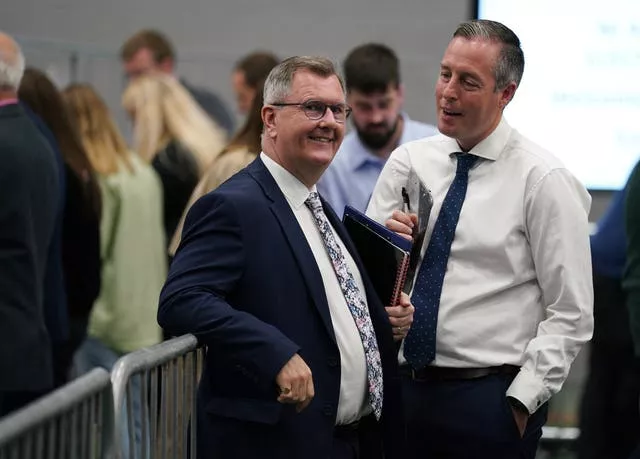
The first of the 90 MLAs are expected to be returned by Friday afternoon but counting is set to continue into the early hours of Saturday.
Some 239 candidates are running across 18 constituencies.
Striking council and education workers staged demonstrations outside a number of the count centres as part of their two-week strike over a rejected pay offer.
Outside the Titanic Exhibition Centre, Belfast City Council worker and Unite shop steward John Moore said they want politicians to take note that “this isn’t going to stop until people come to the table and talk to us”.
“We were offered a 1.75 per cent pay rise after nearly 12 years of pay cuts and pay freezes, and that 1.75 per cent is just another pay cut, people have to meet their household bills, pay for food and energy and they just can’t do it,” he said.

The Northern Ireland Protocol has cast a long shadow over the election campaign following the resignation of first minister Paul Givan in February in an effort to force the UK government to act over the post-Brexit trading arrangements.
This action left the Executive unable to fully function.
While ministers remained in post, they were restricted in the actions they could take.
Unionists object to the additional checks on goods arriving in Northern Ireland from Britain as a border in the Irish Sea.
Seats
Five Assembly seats are up for grabs in each of the 18 constituencies.
Northern Ireland uses the single transferable vote (STV) proportional representation electoral system.
The DUP won 28 seats at the last Assembly elections in 2017, just ahead of Sinn Féin which returned 27 MLAs.
Next was the SDLP with 12 seats, the Ulster Unionist Party with 10 seats, Alliance with eight seats, the Green Party with two seats while People Before Profit and the TUV had one MLA each.
This year, the DUP has been regarded as playing it safe, running 30 candidates, while Sinn Féin is running 34.
Meanwhile, the UUP is running 27 candidates, the Alliance Party is running 24, the SDLP is fielding 22, TUV is putting up 19 candidates, the Green Party is running 18 and People Before Profit 12, as is Aontu, while the Workers Party is running six candidates and the PUP three.
The Irish Republican Socialist Party (IRSP) and the Socialist Party are each fielding two candidates while the Northern Ireland Conservatives, Cross Community Labour Alliance (CCLA), Resume NI and Heritage Party are each running one candidate.
There are also 24 independent candidates.
